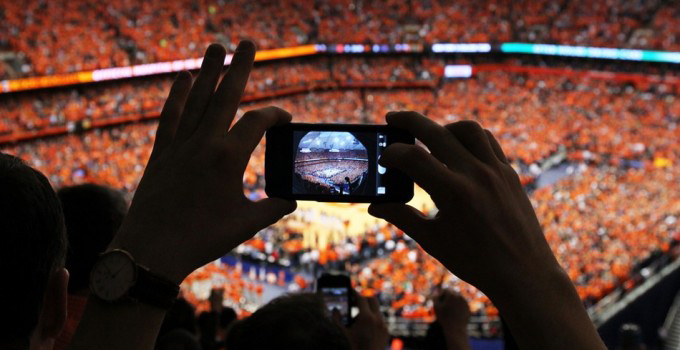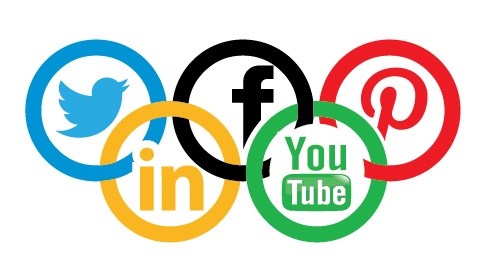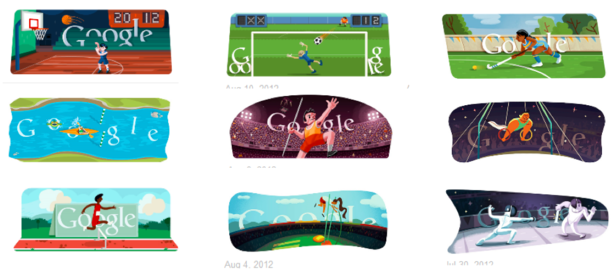Social Media & The Sports Fan
 So, we all know social media now plays a more bigger role than ever in the lives of sports fans around the world. YouTube is an endless source of video highlights and bloopers, Twitter is a gigantic news stream and Facebook is a place for trash talking with friends (Laird 2013). Nowadays, as people watch sport on TV, it is increasingly done in tandem with a mobile phone in hand or a laptop on the knees. For lots of people it is virtually impossible to watch a live-action sports event without the security of a fully-charged smart phone. (Johnston 2014). The prevalence of social meida in the sport sector can be seen in the statistics, take for example the soccer World Cup, in the final match between Germany and Argentina, according to Twitter, there were over 618,000 tweets per minute and 32.1 million tweets in total about the game created and sent during the broadcast of the match, with the semi-final scoring even higher, with a staggering 35.6 million tweets generated during Germany’s beating of Brazil (Johnston 2014). I looked at Hootsuite’s site and saw that they recommend 3 ways that sports organizations can build stronger fan loyalty through social media which I thought were pretty relevant:
So, we all know social media now plays a more bigger role than ever in the lives of sports fans around the world. YouTube is an endless source of video highlights and bloopers, Twitter is a gigantic news stream and Facebook is a place for trash talking with friends (Laird 2013). Nowadays, as people watch sport on TV, it is increasingly done in tandem with a mobile phone in hand or a laptop on the knees. For lots of people it is virtually impossible to watch a live-action sports event without the security of a fully-charged smart phone. (Johnston 2014). The prevalence of social meida in the sport sector can be seen in the statistics, take for example the soccer World Cup, in the final match between Germany and Argentina, according to Twitter, there were over 618,000 tweets per minute and 32.1 million tweets in total about the game created and sent during the broadcast of the match, with the semi-final scoring even higher, with a staggering 35.6 million tweets generated during Germany’s beating of Brazil (Johnston 2014). I looked at Hootsuite’s site and saw that they recommend 3 ways that sports organizations can build stronger fan loyalty through social media which I thought were pretty relevant:
- Humanize and Personalize Teams and Athletes
- Offer Fans Unprecedented Access to Teams Through Unique Content
- Make Fans Contributors to Teams and Unite Them
Many athletes and sports stars have taken to social media with some regularly responding to questions, retweeting fans and generally interacting with the people that idolize them. The contribution this has made to fan loyalty is clear in the follower count of athletes, including Cristiano Ronaldo, Usain Bolt, Brian O’Driscoll and many others who rank among the most followed individuals on social media. Many teams now offer “behind-the-scenes” content on social channels. Instagram photos, YouTube clips and other resources are being used by these organizations to offer exclusives to their followers. I think that USA track and field for one do an excellent job of this on Instagram providing behind the scenes updates with all things track and field which you can check out here. Hootsuite also note that something as simple as showing teammates celebrating on a plane or offering photos of new training facilities can go viral amongst fans of a particular organization. Take for example the tweets below from Irish rugby player Cian Healy, both receiving thousands of retweets and favourites from fans.
Johnston (2014) also noted that more than any other sector, sport has embraced Twitter and social media in ways that business, politics and music may never achieve. You could argue that sports content is so shareable because it is emotional in nature. Be it rugby, soccer, GAA, athletics or anything else that leads to filled seats and cheering fans, sports fans are incredibly active on social media. These fans are adopting increasingly active roles in co-creating marketing content with companies and their respective brands, especially in sport. (Hanna et al 2014). I think that fans are no longer merely passive recipients in the marketing exchange process. Today, they are taking an increasingly active role in co-creating everything from product design to promotional messages (Berthon, Pitt, McCarthy, & Kates, 2007). Hootsuite (2015) note how the idea of co-creation has major implications on how involved fans feel in their teams. By asking fans to submit photos, comments, videos and suggestions, and then highlighting this content on official channels, organisations not only show that they’re listening but that they have a role in the team. By offering exclusive content involving fans with the team on social media channels, teams, athletes and leagues of all levels can increase fan loyalty and have a lasting impact on their business success.
References
- Berthon, P. R., Pitt, L. F., McCarthy, I., & Kates, S. (2007). “When customers get clever: Managerial approaches to dealing with creative consumers”. Business Horizons, 50(1), 39—48.
- Hanna, R., Rohm, A., Crittenden, VL. (2014) “We’re all connected: The power of the social media ecosystem 2014” Business Horizons, 54 (3), 265-273
- Hootsuite (2015) “Building a Loyal Fanbase: How sports Organisations Use Social Media” Whitepaper. [Online] Available at: https://hootsuite.com/content/download/2451/36019/hootsuite-3waysfanloyalty-whitepaper.pdf Last Accesed 21/03/15
- Johnston, M. (2014) “Is social media turning sports fans into cyber sheep?” Irish Independent. [Online] Available at: http://www.independent.ie/opinion/is-social-media-turning-sports-fans-into-cyber-sheep-30509559.html Last Accessed 21/03/15
- Laird, S. (2013) “How Sports Fans Engage With Social Media” Mashable.com [Online] Available at: http://mashable.com/2013/10/03/sports-fans-social-media/ Last Accessed 21/03/15







